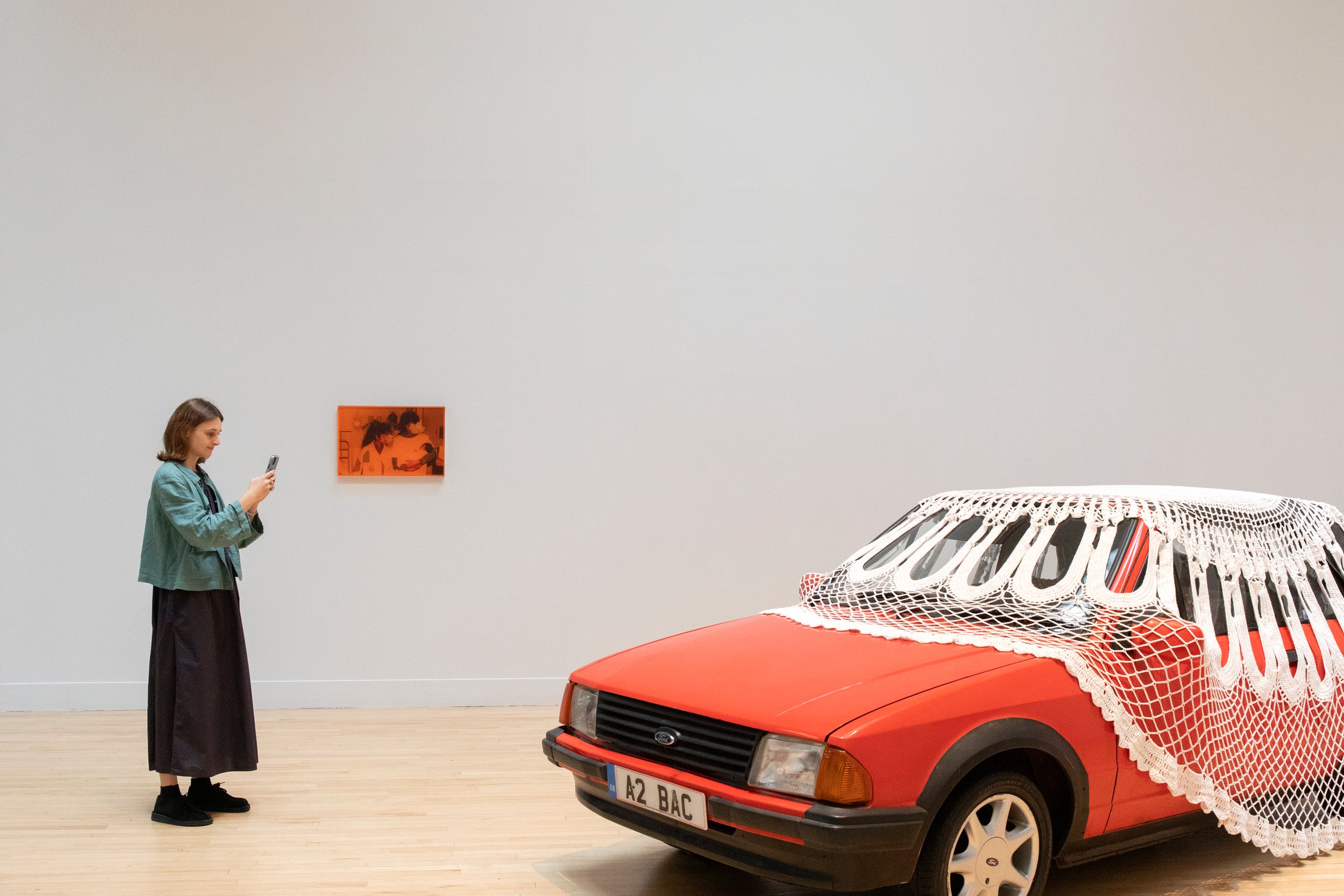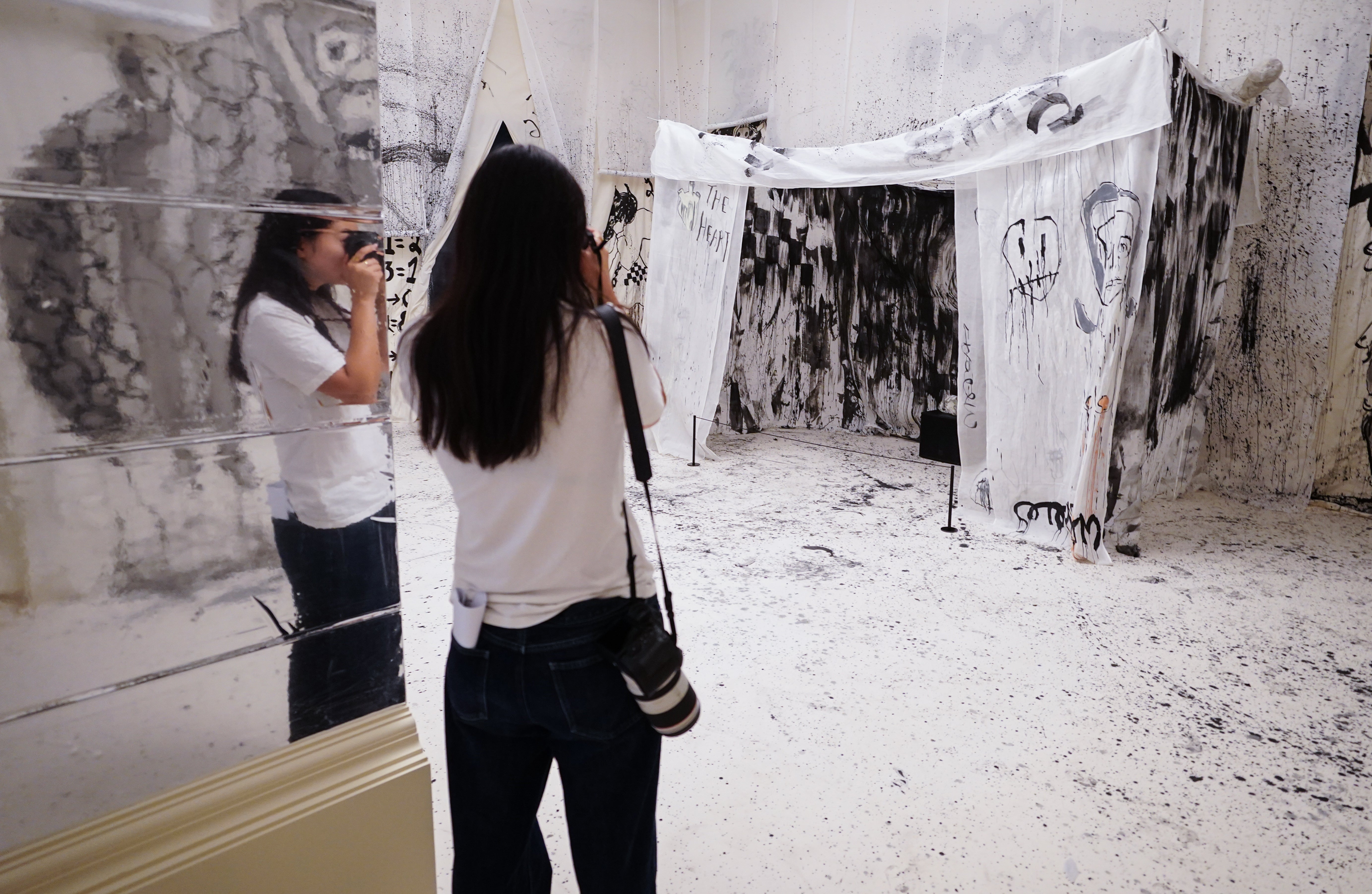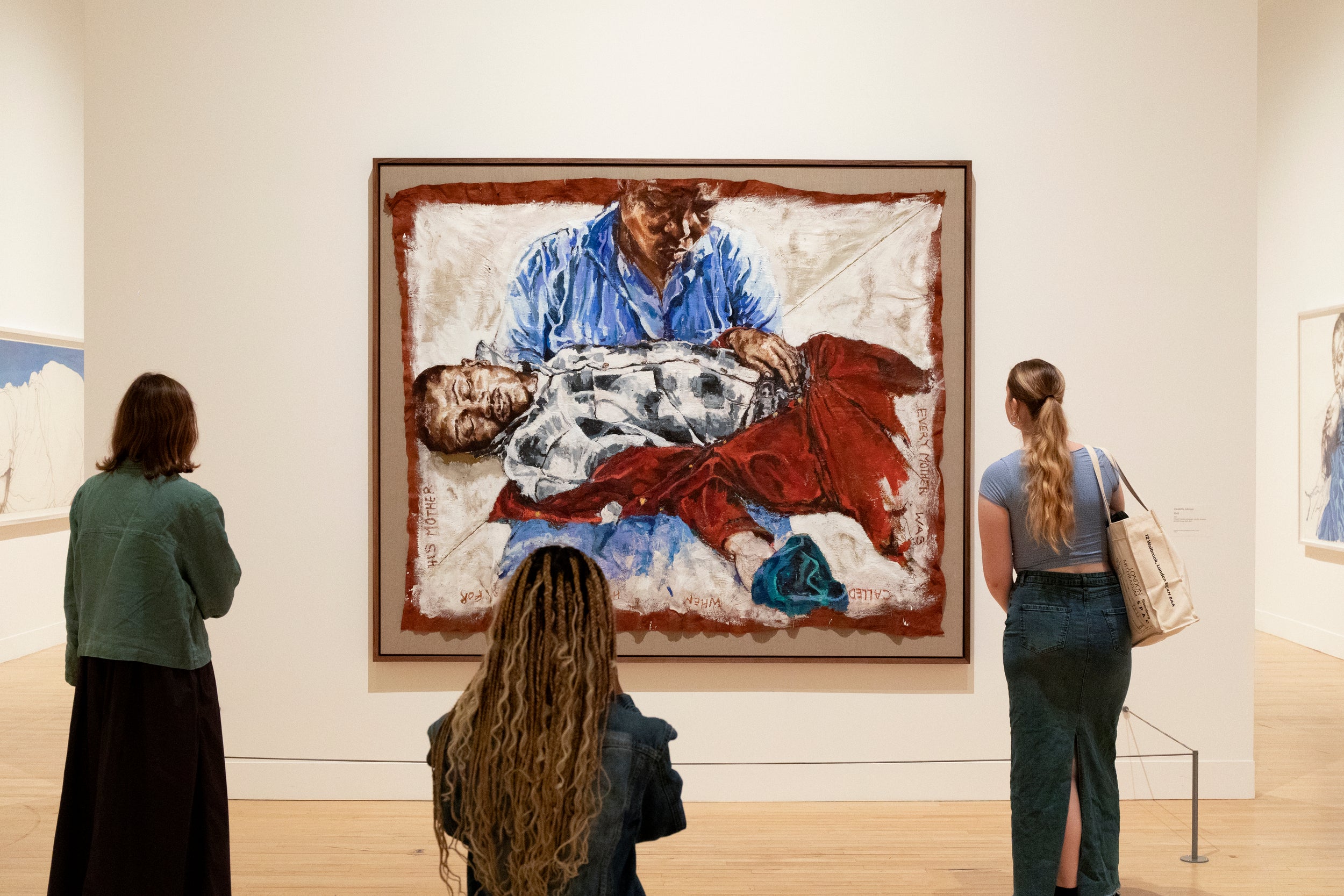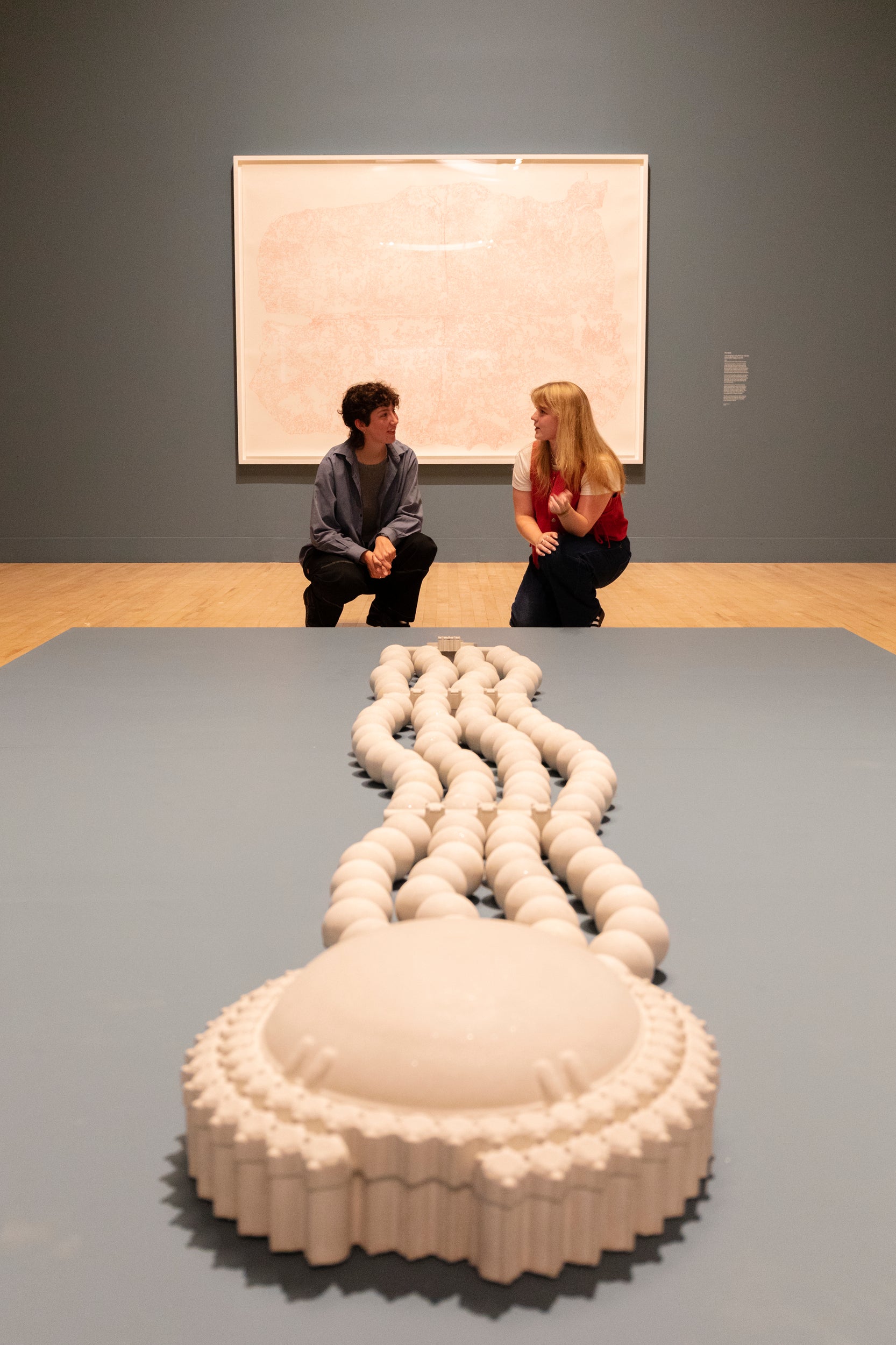Turner Prize 2024: The infamous award’s nominees go on display at the Tate Britain
Jasleen Kaur, Delaine Le Bas, Claudette Johnson and Pio Abad are all up for this year’s prize, with works that delve into decolonisation and anti-imperialist struggle

Your support helps us to tell the story
From reproductive rights to climate change to Big Tech, The Independent is on the ground when the story is developing. Whether it's investigating the financials of Elon Musk's pro-Trump PAC or producing our latest documentary, 'The A Word', which shines a light on the American women fighting for reproductive rights, we know how important it is to parse out the facts from the messaging.
At such a critical moment in US history, we need reporters on the ground. Your donation allows us to keep sending journalists to speak to both sides of the story.
The Independent is trusted by Americans across the entire political spectrum. And unlike many other quality news outlets, we choose not to lock Americans out of our reporting and analysis with paywalls. We believe quality journalism should be available to everyone, paid for by those who can afford it.
Your support makes all the difference.Galleries are mostly quiet places. Nothing but whispers and rustling tote bags. Not so at the Turner Prize exhibition, now in its 40th year, where pop songs blast out of a vintage red Ford Escort parked in the Tate Britain by one of four artists up for winning this year’s £25,000 prize: Jasleen Kaur.
Kaur, 38, a Glaswegian who grew up in the city’s Sikh community, creates sculptures from gathered and remade objects that evoke her heritage in Alter Altar. Bottles of Irn-Bru, Scottish pound notes, lottery tickets, and Nusrat Fateh Ali Khan CDs are trapped in a plastic ceiling. Underfoot lies a huge Axminster carpet that invites you to sit while calming worship bells play. “The carpet is a bid for intimacy,” the artist told the exhibition’s curator, Linsey Young. “I’m longing for people to congregate.”
“She had to take apart the Ford Escort, get it delivered and piece it back together,” reveals Young of the process of transporting Kaur’s work from the Tramway art centre in Glasgow. “The thing about the Turner Prize is there’s no other show like it,” she adds of the hectic nature of the exhibition’s curation. “You get the [nominee] announcement in April, then you open in September. So, you have five months to make a major exhibition across one of the biggest spaces we have at Tate Britain.”

Quickly, as you turn the corner, the exhibition’s audio landscape shifts from Kaur’s prayer and party music to the grief-filled atmosphere of Roma-Traveller artist Delaine Le Bas’s Incipit Vita Nova, an immersive warren that she created shortly after her Nandied. Ink hearts, skulls, and human faces hang on painted fabrics, while Justin Langland’s ominous soundscape accompanies the work. A horse stuffed with hay, modelled on Le Bas’s grandfather’s, cowers in the corner. Blood red footprints decorate the floor.
“My grandmother was dying when I was thinking about making this work,” Le Bas told Young, who spent hours meticulously timing when the installation’s floor could be laid, walls painted, fabrics hung and process repeated in order to achieve its overall labyrinth effect. “I was spending a lot of time up at night, when the shadows and the sounds and everything is different… thinking about how to make art during a time of chaos,” Le Bas recalled.

In contrast, Claudette Johnson’s rooms are markedly silent after the tumult of Le Bas. But the impact of her display, Presence, is loud. Portraits of Black men and women in oil and watercolour line the walls, with the aim of countering the marginalisation of Black people in Western art history. “There’s something about the tradition of portraiture that goes against what I’m trying to do,” Johnson told Young. “I’ve lifted my figures out of their environment and displaced them.”
“I wanted to give Claudette this big, long, elegant area,” Young says of the exhibition’s largest room. “Because people underestimate the scale of her work.”
The most powerful work in Presence is Johnson’s modern “Pietà” painting. Johnson’s take on the classic image of the Virgin Mary, with the crucified Jesus Christ in her arms, is inspired by George Floyd’s death in 2020, and shows a black mother cradling her dying son, alongside the words “every mother was called when he called for his mother”.

“She read that on Instagram around the time of Floyd’s death,” says Young. “It relates to so many incidents across the world, in the UK, and to the ongoing institutional police violence against bodies of colour.”
The intention of the Turner Prize, since it was first awarded to Malcolm Morley in 1984, was to “promote public debate around new developments in contemporary British art”. When you first walk into this year’s exhibition, you’re met with Filipino artist Pio Abad’s To Those Sitting in Darkness, which includes an enormous concrete version of a ruby and diamond pearl bracelet. This bracelet made up part of the £15.7m hoard of jewellery that Imelda and President Ferdinand Marcos stole from the Filipino people, and hid in the nappies of their grandchildren, when they fled to exile in Hawaii in 1986.

“I thought there was something quite fun about going from a museum into a museum,” says Young of launching visitors into the space with Abad’s work. “It’s kind of weird. It’s like a double take,” she says.
“One of the things all of the artists are talking about is decolonisation and anti-imperialist struggle, and they have a lot of questions about what the role of the museum is. What the role of culture is. But they’re all doing it in a way that is global. No one is thinking of themselves as isolated.”
The winner of the Turner Prize 2024 will be announced on 3 December. Kaur, Le Bas, Johnson and Abad’s works are on display at the Tate Britain from 25 September until 16 February 2025.
Join our commenting forum
Join thought-provoking conversations, follow other Independent readers and see their replies
Comments